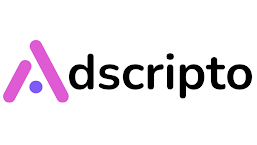Online advertising, the AdTech industry as we know and see today has not been same the 30 years young industry has gone through massive changes and evolution.
The evolution of online advertising has been a dynamic journey closely tied to the development of the internet itself. Here's a detailed history:
1. Pre-Web Era (Before 1990s):
- Advertising was predominantly offline, through traditional mediums like newspapers, magazines, radio, and television.
- The earliest forms of online advertising were limited to primitive methods such as bulletin board systems (BBS) and rudimentary email campaigns.
2. Birth of the Web (1990s):
- With the advent of the World Wide Web in the early 1990s, online advertising began to take shape.
- In 1994, the first clickable banner ad was launched by HotWired (now Wired.com), which advertised AT&T. This marked the beginning of display advertising on the web and people clicked on it like crazy.
 |
| First ever online ad |
3. Dot-Com Boom (Late 1990s):
- The late 1990s saw a surge in internet companies, leading to the dot-com boom. This period witnessed rapid growth in online advertising as companies vied for attention in the burgeoning digital space.- Pop-up ads became prevalent during this time, annoying users but still gaining traction due to their effectiveness.
 |
| Example PopUp ads - Netflix |
4. Search Advertising (Early 2000s):
- Google revolutionized online advertising with the introduction of Google AdWords in 2000, which allowed advertisers to bid on keywords and display text ads alongside search results.- Pay-per-click (PPC) advertising emerged as a popular model, enabling advertisers to pay only when users clicked on their ads.
 |
| Example - Search Ads on google search |
5. Social Media Advertising (Mid-2000s):
- The rise of social media platforms like MySpace, Facebook, and later Twitter and LinkedIn, provided new avenues for advertising.
- Social media advertising allowed for highly targeted campaigns based on user demographics, interests, and behavior.
 |
| Example Social Media Ad |
6. Mobile Advertising (Late 2000s - Early 2010s):
- The proliferation of smartphones led to the rise of mobile advertising, with ads tailored for mobile devices' smaller screens and touch interfaces.
- In-app advertising, mobile banners, interstitial ads, and video ads became common formats.
 |
| Example Mobile Advertising |
7. Programmatic Advertising (2010s):
- Programmatic advertising emerged as a dominant force, leveraging algorithms and real-time bidding (RTB) to automate the buying and selling of ad inventory.
- This technology allowed for precise targeting, efficient ad placements, and optimization based on performance metrics.
8. Native Advertising (2010s):
- Native advertising integrated seamlessly with the user experience of websites and apps, blending in with the content rather than appearing as traditional ads.- Sponsored content, promoted posts, and native display ads gained popularity as advertisers sought non-intrusive ways to engage audiences.
 |
| Example Native Ads on website |
9. Video Advertising (2010s - Present):
- The popularity of online video platforms like YouTube and the integration of video content on social media sites fueled the growth of video advertising.- Pre-roll, mid-roll, and post-roll video ads, as well as sponsored content and branded videos, became prevalent across digital platforms.
 |
| Example Video Ads |
10. AI and Personalization (Present - Future):
- AI and machine learning algorithms continue to reshape online advertising, enabling deeper personalization, predictive analytics, and dynamic ad creative optimization.
- Voice search, augmented reality (AR), and virtual reality (VR) are emerging as new frontiers for advertising, presenting innovative opportunities for brands to engage with consumers.
 |
| Example Ads using AI and ML |

0 Comments